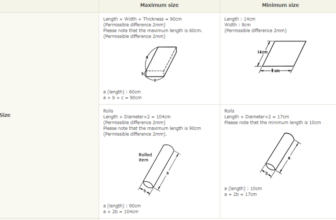
When it comes to memory cards for electronic devices, the TF card vs SD card debate is one that many users encounter. Both of these memory cards are popular choices for smartphones, cameras, and other portable devices. However, there are key differences between the two, such as size, application, and storage capacity, which may influence your decision. This guide will help you understand the differences between the TF card and the SD card, making it easier for you to choose the right option for your needs.

What is a TF Card?
A TF card, short for TransFlash card, is a small memory card originally developed by Motorola and SanDisk in 2004. Often referred to as a Micro SD card, it is one of the smallest memory cards available, measuring only 11 x 15 x 1mm—just a quarter of the size of a typical SD card. Although the TF card initially had its own identity, it was eventually renamed Micro SD by the SD Association in 2004, aligning it with other SD card products.
Despite its size, the TF card is compatible with SD card adapters and can work on any device that supports SD cards. Its small size and high capacity make it ideal for use in smartphones, tablets, and other portable devices.
What is an SD Card?
The SD card (Secure Digital card) is a memory storage device that was first introduced in 1999 by a collaboration between Panasonic, Toshiba, and SanDisk. Known for its small size, fast data transfer speeds, and reliability, the SD card quickly became the standard for use in digital cameras, smartphones, music players, and other portable electronics.
SD cards come in a variety of sizes and capacities, offering a range of storage options depending on the needs of the user. They are widely used across different industries for both consumer and professional-grade electronics.
Key Differences Between TF Cards and SD Cards
Understanding the differences between TF cards and SD cards can help you make the right choice for your device. Here are the 9 key differences:
1. Name and Definition
- SD Card: Stands for Secure Digital Card.
- TF Card: Also called T-Flash or Micro SD, it was initially introduced by Motorola and SanDisk before being renamed to Micro SD by the SD Association.
2. Origin
- SD Card: Developed by Panasonic, Toshiba, and SanDisk in 1999.
- TF Card: Developed by Motorola and SanDisk in 2004.
3. Size and Appearance

- SD Card: Measures 24mm x 32mm x 2.1mm.
- TF Card: Measures a compact 15mm x 11mm x 1mm, making it the smallest memory card on the market.
4. Application
- SD Cards: Commonly used in digital cameras, personal digital assistants (PDAs), multimedia players, and other portable devices.
- TF Cards: Primarily used in smartphones, but as storage capacity increases, they are also used in GPS devices, portable music players, and some flash drives.
5. Convertibility
- TF Card: This can be easily converted into an SD card using an SD adapter.
- SD Card: This cannot be converted into a TF card, making the TF card more versatile in terms of compatibility.
6. Security Features
- SD Card: Includes a write protection switch, which prevents accidental data deletion.
- TF Card: Does not have a physical write protection switch, but it can still be used in SD adapters that offer this feature.
7. Storage Options
- SD Cards: Available in a variety of storage capacities, ranging from 128GB to 256MB.
- TF Cards: Also available in similar storage capacities, ranging from 128GB to 256MB, though larger capacities may be more common in SD cards.
8. Price
- SD Cards: Typically more expensive than TF cards when comparing the same brand, capacity, and speed.
- TF Cards: More affordable, making them an attractive choice for users seeking cost-effective storage solutions.
9. Memory Storage
- SD Cards: Offer a wider range of options, from 256MB to 128GB and higher.
- TF Cards: Also offer a range of capacities, but typically max out at 128GB for most models.
Conclusion: TF Card vs SD Card
Both TF cards and SD cards are reliable and widely used memory storage devices, each offering unique advantages depending on the application. If you’re looking for a smaller and more affordable option, a TF card may be the better choice, especially for devices like smartphones and tablets. However, if you’re seeking larger storage capacities and additional security features, an SD card may be the better fit.
Ultimately, the decision will come down to your device’s compatibility, storage needs, and budget. Understanding the differences between TF cards and SD cards ensures that you choose the best memory card for your requirements.





![Finest HEPA Air Purifiers to Promote On-line + Wholesaler & Dropshipper [China/US/UK]](https://www.tinydeals.net/blog/wp-content/uploads/2025/01/image-165-1024x1024-336x220.png)
